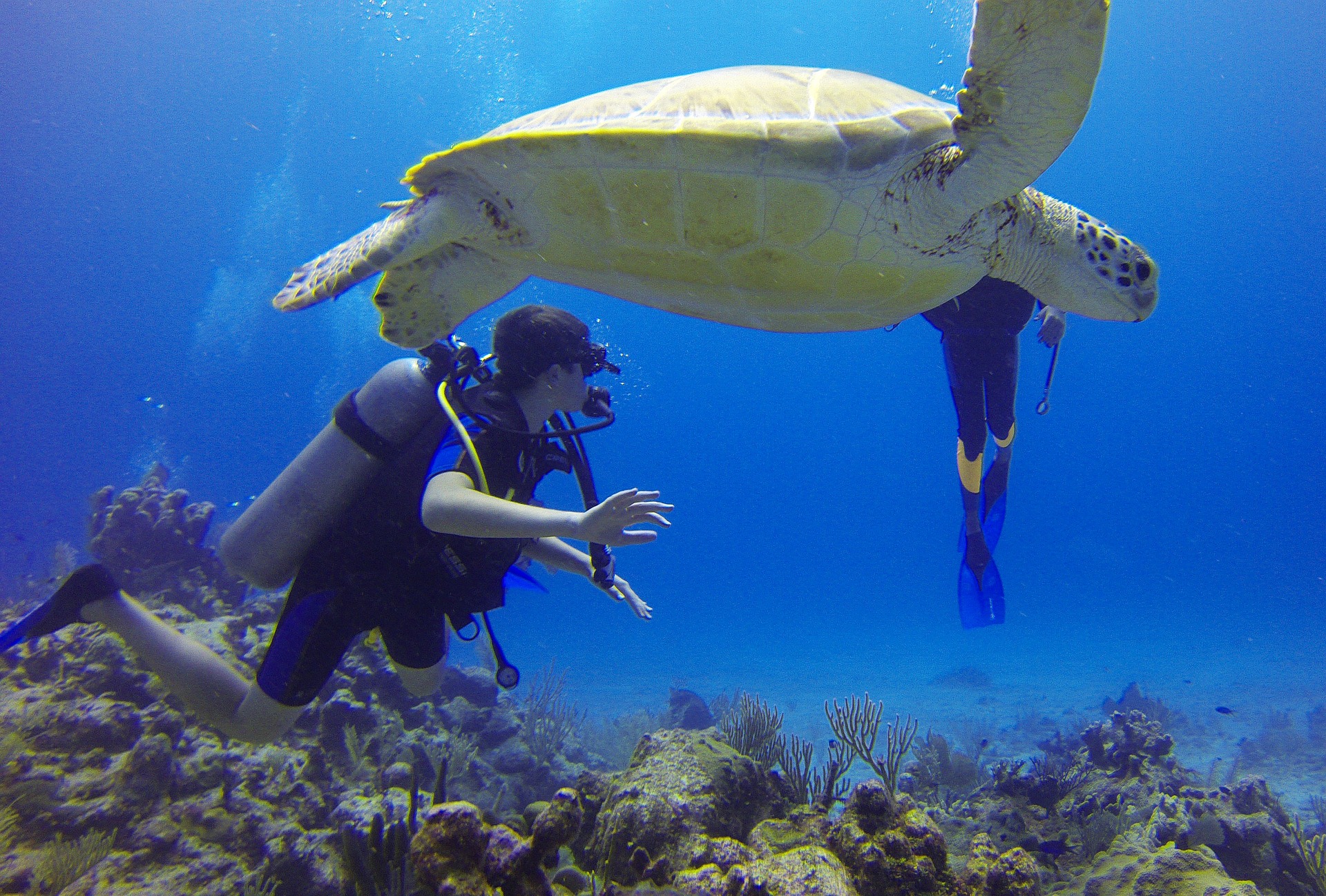If you’re a wheelchair user looking for an exciting underwater adventure, Mexico has plenty of accessible snorkelling and diving opportunities to offer. With crystal-clear waters and vibrant coral reefs, you’ll be able to explore a whole new world beneath the waves. In this article, we’ll highlight some of the best wheelchair accessible snorkelling and diving opportunities in Mexico and the companies that offer them. Cozumel Cozumel is a beautiful island off the coast of Mexico, and it’s one of the best places in the country for accessible snorkelling and diving tours. The island is home to the Cozumel Marine Park, which has wheelchair accessible facilities and boats, making it easy for wheelchair users to explore the park’s stunning coral reefs. There are a few tour companies that offer accessible tours in Cozumel, including Scuba Shack and The Dive Machine. Playa del Carmen Playa del Carmen is a popular beach town on the Yucatan Peninsula, and it’s also a great destination for accessible snorkelling and diving. There are several tour companies that offer accessible snorkelling and diving tours in Playa del Carmen, including The Dive Machine. Puerto Vallarta Puerto Vallarta is a beautiful beach town on Mexico’s Pacific coast, and it’s becoming an increasingly popular destination for accessible snorkelling and diving tours. If you are looking for PADI certification then Silent World Divers could be an option. Cancun Cancun is a popular tourist destination and also happens to be one of the most accessible destinations in Mexico. Some of the dive sites in Cancun have accessible entry points, making it easier for wheelchair users to enter and exit the water. It’s important to note that the accessibility of these dive sites may vary depending on factors such as weather conditions and water levels. It’s always a good idea to contact the dive tour company beforehand to confirm the accessibility of the dive site and to discuss any specific needs or accommodations. The Dive Machine offer tours out of Cancun and you can also try Solo Buceo Tour companies that offer accessible snorkelling and diving tours in Mexico that have adapted their equipment and facilities to accommodate wheelchair users by offering wheelchair accessible boats, adapted scuba diving equipment, and trained staff who can assist with transfers and equipment set-up. Some companies also offer additional support, such as having a guide or dive buddy assigned specifically to the wheelchair user. Mexico has plenty of accessible snorkelling and diving opportunities for wheelchair users. From the crystal-clear waters of Cozumel to the beautiful beaches of Puerto Vallarta, there are many destinations to choose from. With the right tour company and equipment, you’ll be able to explore a whole new world beneath the waves.




Author: web@lylesonline.com
How accessible is Prague for Wheelchair users? Not very!
Prague, the capital city of the Czech Republic, is known for its stunning architecture, rich history, and vibrant culture. However, for wheelchair users, Prague can pose some challenges when it comes to accessibility. Despite the city’s efforts to improve accessibility, there are still several issues that wheelchair users may face.
First and foremost, Prague’s historic architecture poses a significant challenge for wheelchair users. Many of the city’s buildings were constructed centuries ago, long before accessibility was a priority. As a result, many of the buildings in Prague have steps and narrow doorways, making them difficult or impossible for wheelchair users to enter. Even some of the newer buildings may not be fully accessible, as retrofitting an existing structure to accommodate a wheelchair can be a challenging and expensive process.
Another issue that wheelchair users may encounter in Prague is the city’s cobblestone streets. While these streets are picturesque and add to the city’s charm, they can be difficult to navigate in a wheelchair. The uneven surface of the cobblestones can cause discomfort, and in some cases, even pain, for wheelchair users. Additionally, the cobblestones can make it challenging to maneuver a wheelchair, particularly for those with manual chairs. We were able to manage but it was slow going and Evan had to go onto two wheels in some places.

Public transportation in Prague can also pose challenges for wheelchair users. While the city has made efforts to improve accessibility on its public transportation system, many of the trams and buses are still not fully accessible. Some of the older trams, in particular, have steps that make them impossible for wheelchair users to board. While newer trams and buses have low floors and wheelchair ramps, these vehicles may not be available on every route.

Finally, Prague’s public spaces can also present challenges for wheelchair users. While many of the city’s parks and public areas are accessible, some may have uneven terrain or steep hills that make them difficult to navigate. Additionally, some of the city’s tourist attractions may have limited accessibility, such as narrow walkways or stairs. The drop kerb situation is also challenging and we are lucky that Evan can drop off kerbs and I was there to lift up.
Despite these challenges, Prague is working to improve accessibility for wheelchair users. The city has made progress in recent years, including the installation of wheelchair ramps and lifts in some buildings and public spaces. Additionally, the city has added more accessible vehicles to its public transportation system and has launched an accessibility hotline to help wheelchair users navigate the city.
READ MORE BLOGS
A Remarkable Step Forward for Disabled Air Travel: A Game-Changing Mandate
In a groundbreaking move, Pete Buttigieg, the US Secretary of Transportation, has unveiled a monumental announcement that is poised to reshape the air travel experience for disabled individuals not only within the United States but potentially on a global scale, should other nations choose to adopt similar measures. The longstanding issue of the absence of wheelchair-accessible lavatories on airplanes has long cast a shadow over the convenience and dignity of disabled air travellers, deterring countless individuals from embarking on air journeys.
Recent times have brought the spotlight to the forefront, emphasising the need for improved accessibility for travellers with mobility impairments, aiming to break down the barriers prevalent within the aviation and travel sectors. Timed impeccably with the unveiling of the revolutionary Air4All wheelchair space at a prestigious aviation industry event in Hamburg, this announcement holds the potential to significantly ease the air travel experience for disabled passengers, should both initiatives come to fruition.
Pete Buttigieg’s declaration entails a compelling mandate, obligating all US-based airlines to retrofit wheelchair-accessible lavatories onto their single-aisle aircraft. Additionally, any forthcoming single-aisle fleet expansions must include provisions for these accessible facilities. The scope of this initiative has resonated broadly with disability advocacy groups across the United States, as it stands as a testament to the government’s unwavering commitment to ensuring equal rights and opportunities for disabled individuals, ultimately securing a level of comfort and dignity parallel to that of any other air traveller.
While the immediate beneficiaries of this forward-looking proposition are disabled travellers within the United States and those who visit the country, it is plausible that other nations will follow suit, mirroring the innovative steps taken by the United States. Eyes are particularly fixated on the UK Government and the Civil Aviation Authority, as the world watches whether they will align with this trailblazing move. As time progresses, the response of governments worldwide to this pivotal announcement will unfold, a matter of keen interest for disabled air travellers across the globe.





